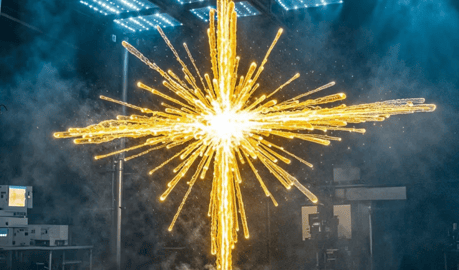Your blog post
Blog post description.
3/16/20251 min read


Scientists freeze light:
A team of Italian scientists has found a way to make light act like a "supersolid," a rare state of matter. Their discovery, published in Nature Journal on March 5, could change how we understand the behavior of light.
Researchers have frozen a pulse of light in place for a full second, a thousand times longer than the previous record. The dramatic lengthening of the pulse's pause hints at a practical approach to short-term memory devices for optical and quantum computers.Stopping a light pulse requires a special trap of very cold and very still atoms--so still that each one is in the same quantum state.
What is a supersolid?
A supersolid is a special type of matter that flows like a liquid but has a solid-like structure. Until now, scientists had only seen this state in extremely cold gases. This new experiment proves that light can also behave this way.
How did scientists freeze light?
Normally, when a liquid freezes, its molecules slow down and arrange themselves in a solid form. But in this experiment, researchers worked with temperatures near absolute zero, where strange quantum effects appear.
Absolute zero is the lowest possible temperature, where all molecular motion stops. It is defined as 0 Kelvin (K), -273.15°C, or -459.67°F. At this temperature, atoms have minimal energy, and matter behaves in unusual ways, such as forming Bose-Einstein condensates. While scientists cannot reach absolute zero exactly, they can get extremely close in laboratory conditions.
